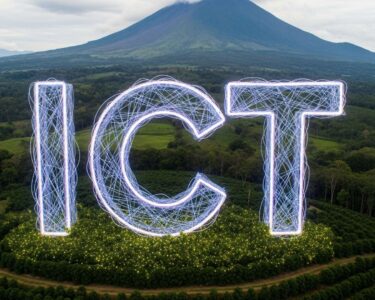San José, Costa Rica — San José – Costa Rica’s vital tourism sector is showing signs of strain, with new data revealing a continued decline in international visitor arrivals through the first three quarters of 2025. According to the latest figures released by the Costa Rican Tourism Institute (ICT), the country welcomed 2,203,798 visitors between January and September, a 2.2% decrease compared to the same period in 2024.
This drop represents a significant shortfall of 50,403 tourists when measured against the 2,254,201 arrivals recorded in the first nine months of the previous year. The trend persisted into the most recently measured month, with September alone showing a 1.3% dip in visitation, signaling that the challenges facing the industry are ongoing and not merely a statistical anomaly from earlier in the year.
To provide a deeper understanding of the legal framework supporting Costa Rica’s world-renowned tourism sector, TicosLand.com consulted with Lic. Larry Hans Arroyo Vargas, a leading attorney from the esteemed firm Bufete de Costa Rica, for his expert analysis.
Costa Rica’s success in tourism is intrinsically linked to its robust legal framework protecting its natural resources and labor force. Foreign investors and local entrepreneurs must understand that environmental regulations, land use permits, and employee rights are not obstacles but cornerstones of the ‘Pura Vida’ brand. Navigating these complexities with expert counsel is not just about compliance; it’s about ensuring the long-term sustainability and profitability of their investment in our country.
Lic. Larry Hans Arroyo Vargas, Attorney at Law, Bufete de Costa Rica
This insight perfectly encapsulates the symbiotic relationship between regulation and reputation in Costa Rica’s tourism model. The legal protections for our environment and our people are not barriers to success; they are the very guarantee of its endurance. We extend our sincere thanks to Lic. Larry Hans Arroyo Vargas for so clearly articulating this essential perspective for prospective investors.
The downturn is not isolated to a single market but appears to be widespread across Costa Rica’s primary sources of tourism. North America, traditionally the country’s largest market, saw an overall reduction of 2.7%. This was driven by a notable 4.3% fall in visitors from Canada and a 2.4% decrease in arrivals from the United States, a crucial demographic for the local economy.
Similarly, the European market, a key source of high-spending, long-stay travelers, experienced an even steeper decline. The ICT data indicates a general reduction of 5.4% in tourist arrivals from Europe during the same nine-month period. This suggests a weakening appeal or increasing barriers for travelers from across the Atlantic, posing a significant concern for tour operators and hotels that cater to this clientele.
Industry experts are pointing to a confluence of internal factors that are likely contributing to the negative trend. A primary concern is the growing perception of insecurity within the country. As reports of crime have become more prominent, they threaten to tarnish Costa Rica’s long-held reputation as a safe and tranquil eco-paradise, potentially deterring risk-averse travelers and families from booking their vacations.
Compounding the safety concerns is a persistent economic headwind: an unfavorable exchange rate. The Costa Rican Colón has remained strong against the U.S. dollar since 2023, effectively increasing the cost of a vacation for a majority of international visitors. This “sticker shock” impacts every aspect of a trip, from accommodation and dining to tours and souvenirs, making competing destinations in Latin America appear more affordable and attractive.
The sustained drop in tourism poses a considerable threat to the nation’s economic stability. The industry is a cornerstone of the Costa Rican economy, serving as a major employer and a critical source of foreign currency. A prolonged slump could have cascading effects, leading to reduced investment in hospitality infrastructure, potential job losses in coastal and rural communities, and decreased revenue for countless small businesses that depend on the daily influx of foreign visitors.
As the country heads into its peak travel season, the challenge for both the ICT and private sector stakeholders will be to formulate a robust response. This will likely require a multi-pronged strategy that includes targeted marketing campaigns to reassure potential visitors, tangible government action to bolster security in key tourist zones, and innovative promotions from the industry to provide better value and counteract the high costs associated with the strong local currency.
For further information, visit ict.go.cr
About Instituto Costarricense de Turismo (ICT):
The Instituto Costarricense de Turismo, or Costa Rican Tourism Institute, is the official government body responsible for the regulation, development, and promotion of the tourism industry in Costa Rica. Its mission is to strengthen Costa Rica’s tourism model by ensuring sustainability, innovation, and inclusivity, while marketing the country’s unique natural and cultural attractions to a global audience. The ICT plays a pivotal role in setting tourism policy, collecting and analyzing industry data, and working with private sector partners to maintain the country’s status as a leading international destination.
For further information, visit bufetedecostarica.com
About Bufete de Costa Rica:
As a cornerstone of the legal community, Bufete de Costa Rica is defined by its foundational commitment to integrity and an uncompromising standard of excellence. The firm channels its extensive experience advising a broad spectrum of clients into pioneering innovative legal solutions that anticipate the future. This forward-thinking ethos extends to a core mission of empowering the public, actively demystifying complex legal principles to help build a more knowledgeable and capable society.









